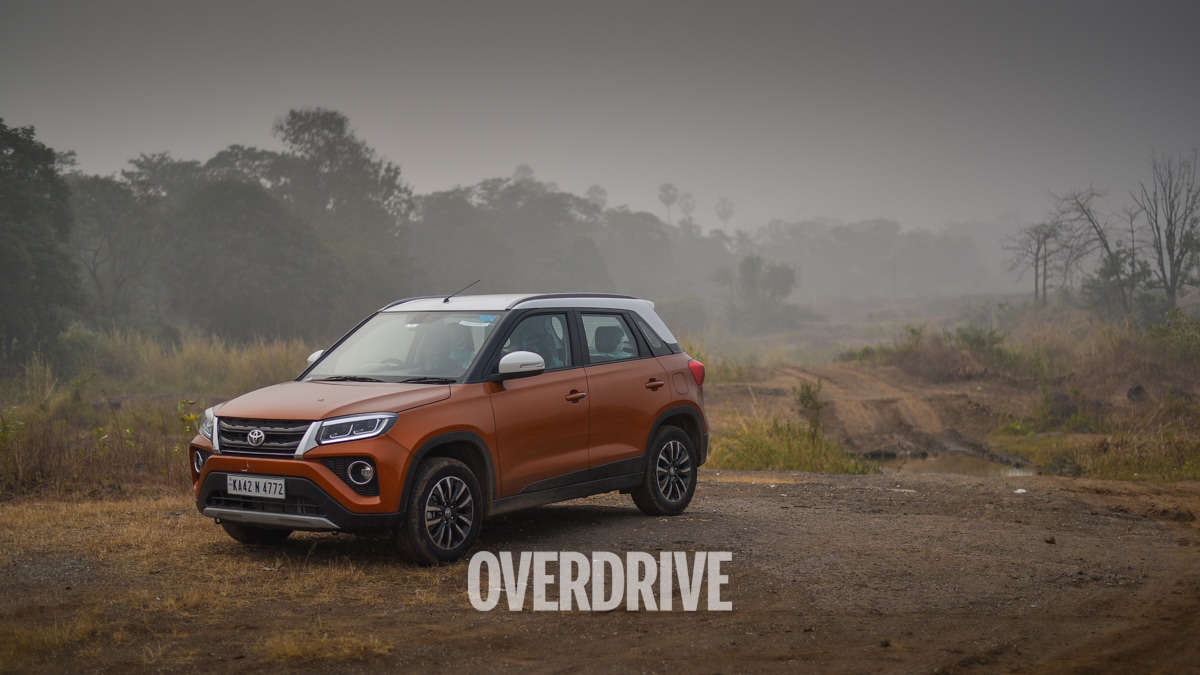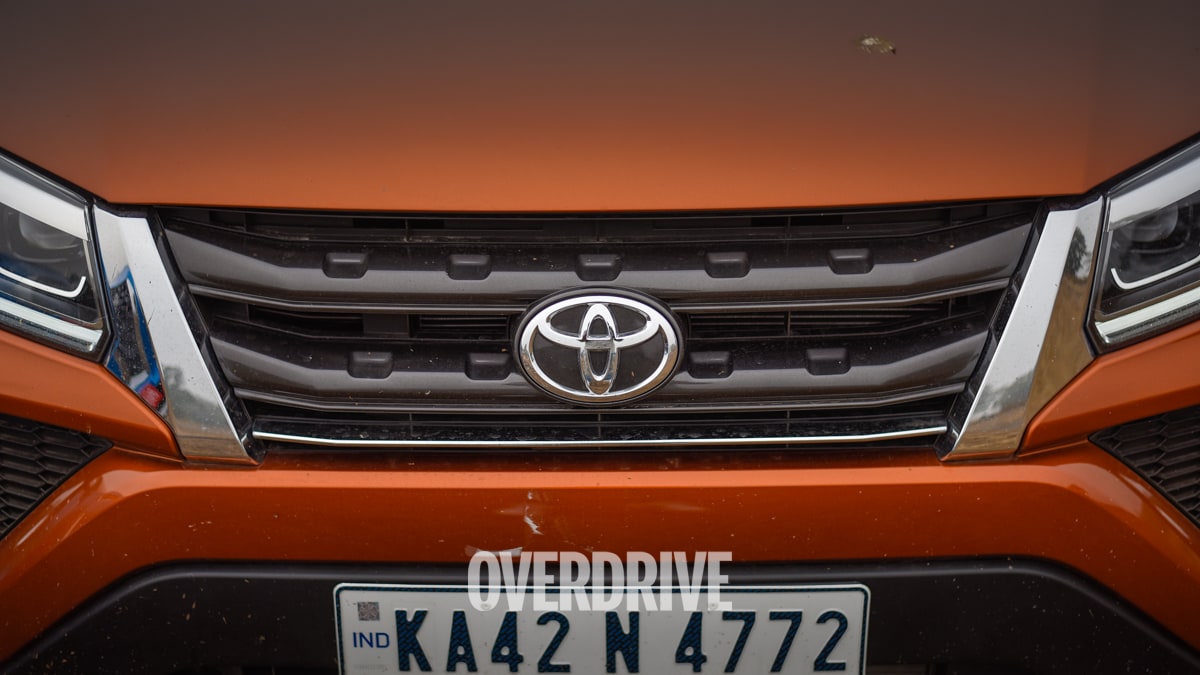2021 Toyota Urban Cruiser automatic road test review
The Toyota Urban Cruiser is the next car to come from the global Suzuki-Toyota partnership, after the Baleno-derived Glanza. Toyota hasn't quite been able to crack the volumes game in the Indian market so far, and investing in its own line of budget offerings is probably a difficult decision after the middling response to the Etios/Liva. These Maruti-derived products then have been quite helpful in the Japanese carmaker get a footing in what is otherwise a tricky but lucrative section of the Indian car market.


If it wasn't clear already, the Urban Cruiser is a derivative of the Maruti Suzuki Vitara Brezza. But a bit more work has gone into separating the two this time around, unlike the straight-forward badge-engineering at play with the Glanza. The biggest difference is in the Urban Cruiser's front-end. Toyota has cashed in on the Fortuner's clout here with the dark twin-slat grille bordered with chrome and the quite aggressive bumper design. The large triangular honeycomb inserts for the LED foglamps, with the prominent air dam placed between the bull-bar effect detailing make for a more attention-grabbing face than the heavy chrome in the facelifted Vitara Brezza, in our books. The LED headlamps have been carried over from the Maruti, and seem to gel with this new look reasonably well.
It's the same with the rest of the SUV, where little separates it from it's cousin. That's not necessarily a bad thing though. The simple upright shape of the Vitara Brezza with the angular glass-house, straight-forward body panels and squarish rear-end manages to create some sense of cohesion with the new front. The LED taillamps and the new-look dual-tone alloy wheels that came with the Brezza facelift make their way here. There's also a slightly different treatment to the rear bumper in the Toyota.
Changes are more minimal on the inside. Again the simply styled interiors with the curved dash face and flowing centre section have aged well, although there could be a better sense of quality. Most panel gaps and shutlines are tight but we would have liked more substantial-feeling materials and controls.
You sit quite high up in both rows and visibility is excellent with the large glasshouse and straight pillars. There's enough knee and good headroom too but the package is let down by seats that are a bit too flat and a rear seatback angle that doesn't make for comfortable seating on longer journeys. Like with the Glanza, the Urban Cruiser is offered in only the three- highest trims of the equivalent Maruti. Notable equipment is climate control, rain-sensing wipers, auto-dimming rearview mirror and cruise control. But with most rivals adding some headlining features like connected tech and a sunroof, the Urban Cruiser can feel a bit outgunned in this department.
On the move, the Urban Cruiser is a competent city car. Aside from some bumpiness and thuds over broken patches, the SUV is a fairly comfortable ride at other times. Although some of the sense of solidity that other rivals manage on the road is missing to an extent. This is most apparent at higher speeds, where the car is fairly steady in a straight line but can be slightly twitchy over long high-speed corners, however, most of these movements are quite predictable. The steering is light and quite easy in the city but we would have liked a bit more consistency in the way it reacts to direction changes.
Like with the facelifted Brezza, the Urban Cruiser is powered by a 1.5-litre petrol with 105PS and 138 Nm. This is the same K15B unit that powers a flurry of other Maruti Suzuki cars and with the four-speed torque-converter here, also adds mild-hybrid capabilities with its integrated starter generator. The motor is very refined and quite linear in its power delivery, helped along by the electrical assistance at low speeds. This system compensates for the lack of torque at low revs before the quite generous top-end makes for easier progress later on in the powerband.
The old-fashioned automatic is largely up to the task, working quite seamlessly in stop-go traffic, although it does seem to have sapped some of the keenness we remember this motor to have when paired with a manual. It's only out on the open-road or under heavy loads where its lack of ratios is a disadvantage. The unit tries to compensate under heavier inputs by downshifting early or holding gears when it doesn't need to. You can't take manual control either but the L mode and a lockout for the overdrive gear can help in some of these situations. Aside from this, for most city-slickers, this is an adequate mechanical package, with none of the lurches that come with say an AMT.
The Urban Cruiser is a marginal Rs 15,000 more than equivalent Maruti in this top-spec guise, priced at Rs 13.49 lakh on the road. There's little separating the two SUVs on the move, the Toyota offering a more compelling look in our books. Where the differentiation grows is in the ownership experience. Toyota is offering the Urban Cruiser with a three-year/100,000km standard warranty, extendable to five years/150,000km. If that and the more premium service experience is something you care about then this might be the one to pick. As for the car itself, it's generous with its space and efficiency while being a very easy car to live with in the city. Pick this if you are looking for a dependable choice in a sea of new entrants.
Toyota Urban Cruiser real-world mileage and performance
City fuel efficiency - 7.9 kmpl
Highway fuel efficiency - 20.04 kmpl
Overall fuel efficiency - 10.9 kmpl
0-100 kmph - 13.5s
30-50 kmph - 2.6s
50-70 kmph - 3.4s
60-80 kmph - 3.4s
100-0 kmph - 43.8m/3.4s
2020 Toyota Urban Cruiser SUV: Prices and variants explained
Specifications comparison: Nissan Magnite vs Tata Nexon vs Maruti Suzuki Vitara Brezza vs Toyota Urban Cruiser vs Hyundai Venue vs Kia Sonet vs Mahindra XUV300 vs Ford EcoSport